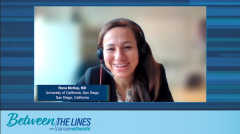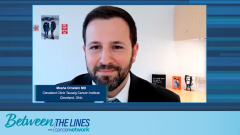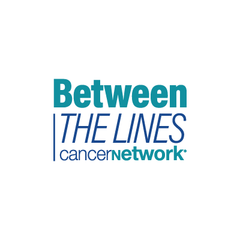
Incorporating Data from the CLEAR Trial into Clinical Practice
Experts discuss how data from the CLEAR trial affects the management of advanced renal cell carcinoma in their clinical practices.
Episodes in this series

Brian Rini, MD: How have you incorporated this into your practice? I don’t know if you’re an I/O–I/O [immuno-oncology] person or an IO–TKI [tyrosine kinase inhibitor]. If you’re an I/O–TKI, for those patients, do you give those regimens too? Are you choosing these over others? How are you making those decisions?
Mehmet Asim Bilen, MD: To me, it’s still a tough discussion, Brian. We see all those patients in our clinical practice, and those conversations are long because we don’t have only 1 option; we have several. Unless we have a good predictive biomarker, I don’t think our job is going to be simpler soon. Overall, when I see a patient, try to make that big decision. Should I go I/O–I/O or I/O–VEGF? The advantage for I/O–I/O, especially if they’re on maintenance immunotherapy, is that they have a good quality of life. There’s no way to beat that quality of life with any VEGF inhibitors vs I/O–TKI combinations, it tends to be a higher response rate. If we have a patient in whom we want to achieve rapid response and tumor reduction, they’re very appealing. Among those 3 options—pembrolizumab plus axitinib, nivolumab plus cabozantinib, and lenvatinib plus pembrolizumab—all 3 look great, and all 3 look effective. I don’t have a clear sense which should be my winner. All of those are effective for patients with kidney cancer.
Moshe Ornstein MD: The first thing we look at is the high-level results, which have to do with response rate, PFS [progression-free survival], complete response rate, and hazard ratio for survival. When I look at the results of the CLEAR trial, I’m looking at the high-level results of lenvatinib and pembrolizumab. I ask myself, “What would I have wanted to see from this trial,” because it’s the fifth or so of the I/O–based combinations in frontline RCC [renal cell carcinoma]. In other words, we’ve already seen ipilimumab and nivolumab, we’ve seen axitinib and pembrolizumab, we’ve seen axitinib avelumab, and we’ve seen cabozantinib and nivolumab. All those had some differences but a lot of similarities, and the field was waiting for this 1 to come out. If we were to say, before the trial came out, that the objective response rate would be over 70%, that the complete response rate would be over 15%, 16%, that the PFS would be close to 2 years, those numbers for many would be considered practice changing. Obviously, there’s a role for all the I/O–TKIs, but from a high-level perspective and cross-trial comparisons, of course, there are always challenges.
At the end of the day, when you line up the PFS response rate, the complete response rate for this trial compared with some of the other ones, the benefits seem to tilt in this direction. For the average patient who has de novo metastatic RCC that has yet to be treated, I tend to prefer this regimen when I’m choosing an I/O–TKI. For me, though, the first thing I think about is if this is a patient, I can give an I/O–I/O, to or am I choosing an I/O–TKI? Within the I/O–TKI regimens, it’s important for that patient to have a response right up front. It’s important to have a long PFS before we need to move to something else. It’s an embarrassment of riches these days, but that’s how I look at it.
Transcript edited for clarity.
Newsletter
Stay up to date on recent advances in the multidisciplinary approach to cancer.



























































































